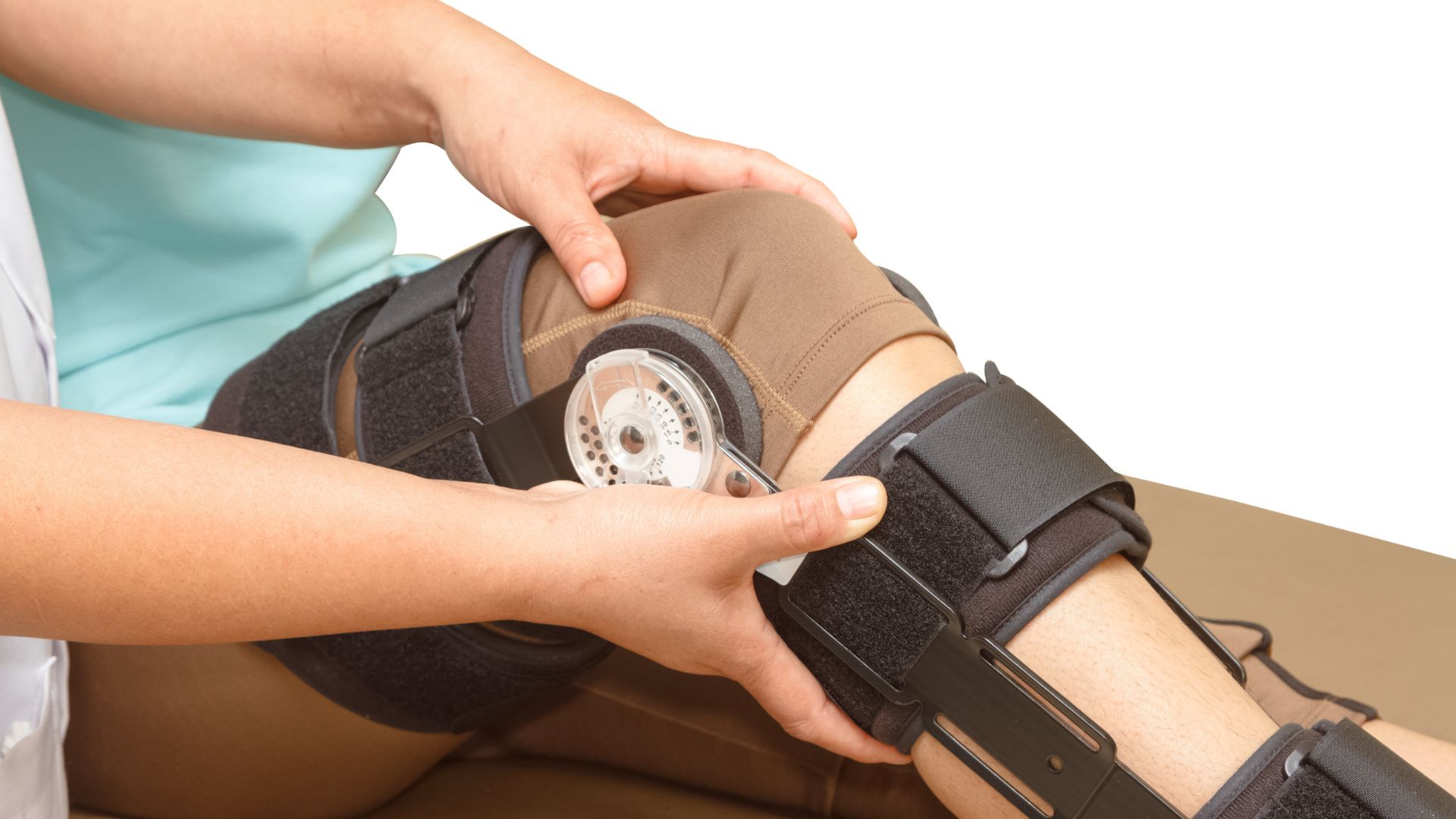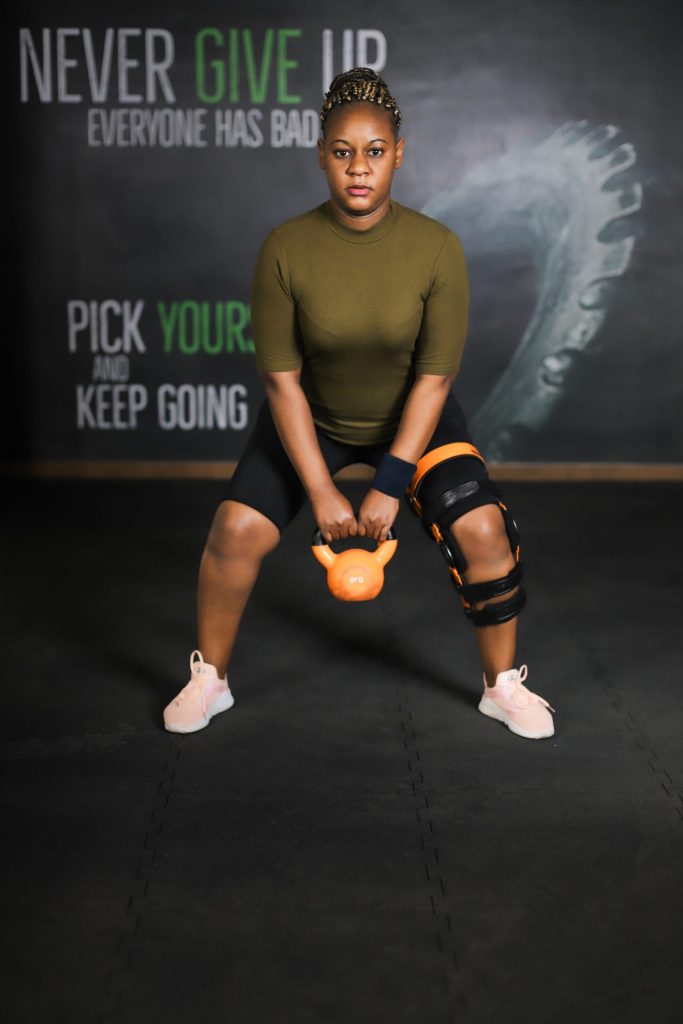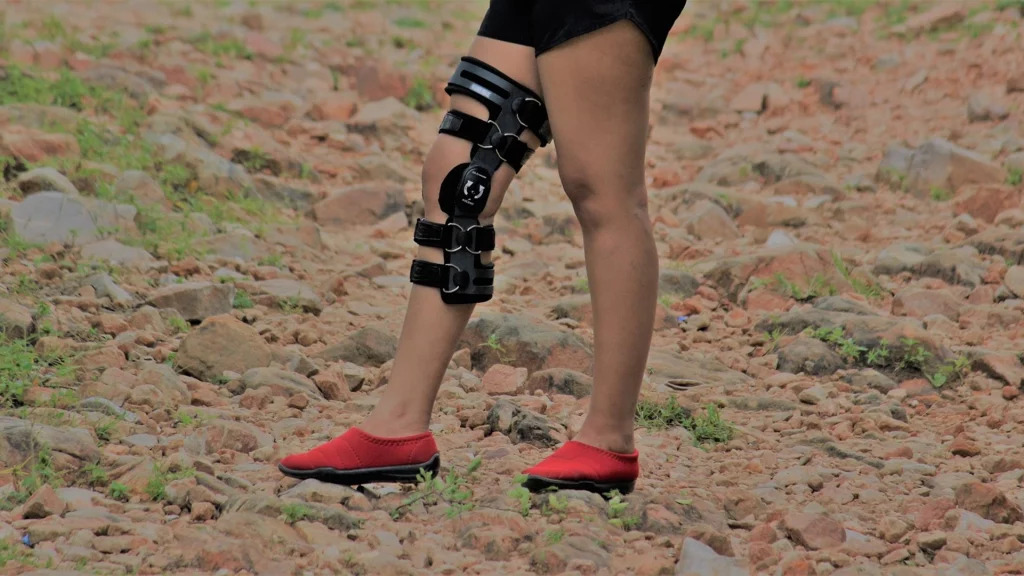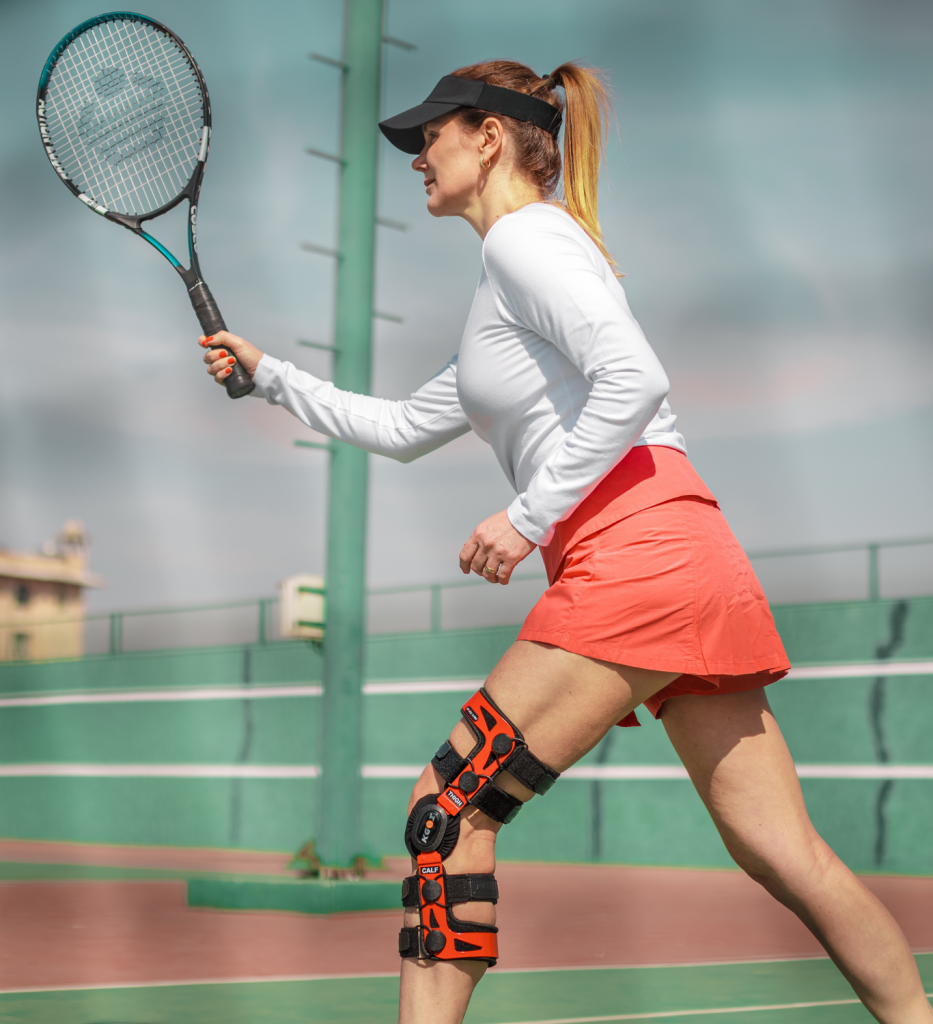Knee pain and instability can truly throw a wrench in the works for those of us who love being active. It’s disheartening, isn’t it? The journey to finding the right support brings us to knee braces – these aren’t just accessories, they’re game-changers.
For anyone grappling with knee issues, imagine having a companion that offers remarkable support and stability. Through expert compression and stabilization, knee braces are like secret weapons against discomfort, swelling, and troubled joint function.
Diving into how these devices work is not just educational; it’s empowering for anyone eager to safeguard their knees or navigate recovery.
With our background rooted deeply in sports medicine and orthopedic care, we’ve witnessed the life-altering impact of well-crafted knee braces time and again. They’re more than just supports; they’re beacons of hope—whether it’s lending ligament support to athletes or easing the day-to-day battle against osteoarthritis pain.
Our insights are shaped by comprehensive expertise but shared with a touch of empathy because navigating knee challenges is a shared human experience. As we unpack the wonders of this incredible gear together, think of it as enrolling in a course where your knees end up graduating top class!
Key Takeaways
- Knee braces stabilize and protect the knee during activity and recovery by holding it in place, improving alignment, reducing pain, swelling, and promoting healing.
- Different types of knee braces offer various levels of support for injury prevention, recovery post-injury or surgery, improved performance during physical activities, and pain relief for conditions like osteoarthritis.
- Choosing the right knee brace involves considering the type of support needed based on specific injuries or conditions, activity level, ensuring proper sizing for comfort and effectiveness, and consulting with a healthcare provider for personalized advice.
Understanding Knee Braces
Knee braces provide support for our knees during activity and recovery. They can help stabilize the joint, reducing pain and promoting healing.
What is a knee brace?
A knee brace is a supportive device that we wear around our knees to stabilize and protect the joint. These braces help maintain proper alignment during movement, preventing excessive strain on the knee structure.
Typically made from materials that provide both compression and support, they are effective for those recovering from injuries or surgeries. We find them essential in aiding recovery after knee surgery as they limit unnecessary movements while healing occurs.
Knee braces also play a crucial role in injury prevention, especially for athletes engaging in high-impact sports. They can be beneficial for conditions like osteoarthritis by reducing pain and swelling around the joint.
With various types such as ligament support braces and orthopedic braces available, individuals can choose what fits their specific needs best. This way, we ensure better mobility while managing any discomfort effectively through compression support and stabilization features inherent in these devices.
How does a knee brace work?
Knee braces work by supporting and holding the knee in place to keep it aligned. They provide compression around the knee joint, which helps control pain and reduces swelling. The materials used in these braces offer support to weak or injured knees, making them essential for individuals recovering after surgery.
Wearing a knee brace improves blood flow and aids in recovery by preventing excessive movement while healing occurs. Functional knee braces stabilize the joint, allowing better mobility during physical activities.
Athletes often rely on these supports to continue their routines despite injuries, benefiting from improved stability and reduced pain overall.
Benefits of Wearing a Knee Brace
Wearing a knee brace can help stabilize weak or injured knees. It also aids in reducing swelling and alleviating pain, which makes movement easier.
Support for weak or injured knees
Knee braces provide essential support for weak or injured knees. They help stabilize the knee joint, preventing excessive movement that could worsen an injury. Compression materials are often used in these braces to reduce swelling and inflammation around the knee, offering pain relief during recovery.
The added stability allows us to engage in physical activities without risking further damage.
Athletes frequently rely on knee braces for additional support while recovering from injuries. These devices enable us to maintain mobility despite experiencing discomfort or instability in the knee.
Functional knee braces serve as a preventive measure against future injuries by providing protection during sports and other strenuous activities. Moving forward, we will explore the various types of knee braces available to enhance support and function.
Injury prevention
Knee braces play a crucial role in injury prevention, especially during sports activities. They work by providing additional support to the knee joint, which helps stabilize it during movements that could otherwise lead to injury.
This extra stability is vital for athletes who may be prone to twisting or turning motions that put stress on their knees. Many individuals rely on these braces not only for added protection but also for peace of mind while engaging in physical activity.
We often use compression knee sleeves as an effective way to keep our joints warm and reduce the risk of strains. These types of braces offer the right amount of compression around the knee joint to control pain and swelling, thus keeping us active without fear of aggravating existing issues or inducing new injuries.
Functional knee braces are particularly useful since they fit snugly around the joint, promoting better alignment and helping us maintain proper movement patterns.
The importance of wearing a knee brace cannot be overstated when it comes to preventing injuries and maintaining overall joint health. Athletes frequently find themselves relying on these supports as they continue with training or competitions after experiencing minor injuries.
Knee stabilization becomes essential not just for recovery but also for ongoing performance enhancement in any athletic endeavor we pursue next: understanding different types of knee braces can further aid our decision-making process.
Improved blood flow
Wearing a knee brace can lead to improved blood flow around the knee joint. Many braces are made from materials that provide compression, which helps stimulate circulation. This enhanced blood flow promotes healing and reduces swelling.
Increased circulation also aids in delivering essential nutrients to the affected area, contributing to overall recovery.
Our first-hand experience shows that compression-supported braces effectively manage pain relief for conditions like osteoarthritis. They help minimize inflammation by controlling fluid build-up around the knee.
As a result, patients often report feeling more comfortable and mobile during their daily activities and workouts.
Athletes frequently rely on these braces not only for stability but also for improving performance through better blood circulation. Enhanced blood flow keeps muscles warm and flexible, which is crucial during physical activity support or rehabilitation after injury.
Hence, using a knee support system becomes vital in maintaining optimal function while helping accelerate recovery processes.
Reduction of swelling and inflammation
Knee braces effectively play a significant role in the reduction of swelling and inflammation. They provide compression around the knee joint, which helps to control pain and manage excess fluid buildup.
We have observed that many individuals experience less discomfort after using these supportive devices, particularly following an injury or surgery. This compression not only calms inflamed tissues but also contributes to improved blood flow, which is essential for healing.
Our experiences demonstrate that wearing a knee brace can lead to noticeable relief from conditions like osteoarthritis. By stabilizing the joint and reducing pressure on surrounding ligaments, we find that knee braces support recovery after injuries while minimizing swelling at the site of discomfort.
As users report decreased inflammation levels, they often enjoy enhanced mobility and overall better function of their knees, helping them return to their daily activities more quickly.
Pain relief for osteoarthritis
Pain relief for osteoarthritis is a significant benefit of wearing knee braces. These supports provide essential stabilization to the knee joint, which can help alleviate discomfort associated with this condition.
Many individuals find that functional knee braces offer improved mobility while reducing pain levels. Compression plays a vital role as well; it aids in controlling swelling and inflammation around the affected area.
Knee braces also help distribute weight more evenly across the joint, which relieves pressure on damaged cartilage. As we wear them during daily activities or sports, we experience enhanced support that allows us to remain active without exacerbating our condition.
This makes knee injury prevention easier while simultaneously providing effective osteoarthritis pain relief as we navigate through our routines.
Improved performance during physical activity
Knee braces enhance our performance during physical activity by providing support and stability. They help keep the knee joint aligned, allowing us to move more confidently. With this added stability, we can engage in sports and exercises without overexerting ourselves.
Many athletes use these supports to maintain mobility while managing existing injuries.
These braces also promote better movement patterns, reducing the risk of further injury. We find that functional knee braces offer a great balance of compression and support around the joint.
This combination not only alleviates discomfort but also improves overall athletic performance significantly.
Our experience has shown that wearing a knee brace can lead to increased confidence during challenging activities. As we push our limits in sports or intense workouts, knowing our knees are well-supported allows us to focus on achieving our best results without hesitation.
Now, let’s explore the different types of knee braces available for various needs and conditions.
Aid in recovery after injury
Knee braces aid in recovery after injury by stabilizing the knee joint and preventing excessive movement during the healing process. They provide essential support, allowing us to engage in light activities without risking further damage.
Compression features help control swelling and reduce pain, facilitating a smoother rehabilitation journey. Many people have experienced significant improvements in mobility thanks to these devices.
Athletes particularly benefit from using knee braces post-injury. With the right brace, we can often return to physical activity sooner than expected while minimizing discomfort. Functional knee braces are designed specifically for this purpose—offering stability that enhances our overall performance despite previous injuries.
As we heal, these supports become invaluable tools for managing joint pain and improving knee function effectively.
Types of Knee Braces
Knee braces come in different types to meet various needs. Some offer compression, while others focus on support for ligaments or meniscus injuries. Stabilizing braces help keep the knee steady during movement.
Orthopedic braces provide extra protection and stability after injury. The right type can make a big difference in comfort and recovery. Check out more details about each type!
Compression braces
Compression braces play a crucial role in knee injury support and recovery. They provide targeted compression around the knee joint, which helps control pain and reduce swelling effectively.
Many people use these braces to enhance their comfort during daily activities or sports, particularly when dealing with conditions like osteoarthritis. The added pressure allows for improved blood flow, promoting healing and reducing inflammation.
These braces are typically made from elastic materials that allow flexibility while maintaining firmness. As we wear compression braces, they help stabilize the knee joint, allowing us to maintain better mobility with reduced pain.
This support is especially beneficial during physical activity, as it aids in preventing injuries by keeping the joints aligned properly. Compression braces offer an excellent solution for those seeking joint pain relief and functionality improvement for an active lifestyle.
Ligament braces
Ligament braces provide essential support for the knee joint, especially during activities that put stress on ligaments. They stabilize the knee by holding it in place and preventing excessive movement.
This functionality is crucial for individuals recovering from ligament injuries or surgeries. Some of us use these braces to manage knee pain relief effectively while ensuring we can perform daily tasks with confidence.
These braces often feature adjustable straps that allow us to customize the fit according to our needs. The compression they provide enhances blood flow around the affected area, which aids in swelling reduction and promotes healing.
In many cases, athletes rely on ligament braces as a precautionary measure to avoid reinjury during physical activity, thereby maintaining knee stability and performance levels even amidst challenges like osteoarthritis or previous injuries.
Meniscus braces
Meniscus braces provide targeted support for those dealing with meniscus injuries. These braces help stabilize the knee joint and prevent excessive movement, which can exacerbate pain or further damage the cartilage.
They are usually made from flexible materials that allow for some mobility while still offering essential support. Our experience shows that using a meniscus brace can significantly aid in the recovery process after knee surgery by managing swelling and controlling pain.
These specific braces are designed to encourage proper alignment during movement, improving overall function of the affected knee. For athletes, wearing a meniscus brace allows us to continue engaging in physical activities while minimizing stress on the injured area.
The added compression also contributes to improved blood flow around the joint, which aids in healing and reduces inflammation associated with common issues like osteoarthritis and other knee conditions.
Stabilizing braces
Stabilizing braces offer vital support for the knee joint, enhancing stability and alignment. These braces fit snugly around the knee to provide additional protection against instability during movement.
We find that athletes often rely on these types of braces to continue engaging in physical activities while managing injuries. They allow us to maintain mobility even when pain or weakness might otherwise hold us back.
These braces are particularly valuable for individuals recovering from injuries or surgeries related to ligaments. They prevent excessive movement as the knee heals, promoting a safer recovery process.
The added compression can help manage swelling and pain effectively, making them an excellent choice for osteoarthritis knee support as well. With improved function and reduced discomfort, stabilizing braces play a significant role in our journey towards regaining full strength and athletic performance after an injury.
Orthopedic braces
Orthopedic braces play a vital role in knee rehabilitation and pain management. These specialized braces stabilize the knee joint, offering crucial support for individuals recovering from injuries or surgeries.
They help maintain proper alignment of the knee while allowing for mobility. The materials used in orthopedic braces provide compression, which not only helps control pain but also reduces swelling and inflammation around the joint.
Their design focuses on providing targeted support where it is needed most, making them an excellent choice for those dealing with conditions such as osteoarthritis.
We have seen firsthand how orthopedic braces can aid athletes during their recovery process. They offer essential stabilization that allows athletes to continue physical activities despite ongoing issues with knee function improvement.
With options available tailored to various needs—like meniscus support or injury prevention—orthopedic braces are valuable tools in managing knee protection effectively. Wearing these supports can significantly enhance our overall performance while minimizing the risk of further injury, showcasing their importance across different levels of activity.
How to Choose the Right Knee Brace
We should think about the support we need. We must also factor in how active we are. Getting the right size is key for comfort and effectiveness. Consulting a healthcare provider can help guide our choice, too.
For more insights on knee braces, keep reading!
Determine the type of support you need
Determining the type of support we need from a knee brace is essential for effective pain management and injury prevention. Different types cater to specific conditions or activities.
For instance, functional knee braces stabilize the joint and offer support during physical activities, especially for athletes who want to continue despite an injury. They allow us to maintain our performance while ensuring the knee remains protected.
Compression braces focus on providing pressure around the knee joint. This helps control pain and swelling, making them ideal for those recovering after surgery or managing chronic conditions like osteoarthritis.
Understanding our activity level also plays a critical role in choosing a brace; some designs are more suited for high-impact sports while others assist with everyday movements. Making the right choice enhances mobility and promotes healing effectively.
Consider your level of activity
Understanding our level of activity is crucial when choosing a knee brace. Athletes often require high levels of support to prevent injuries during sports activities. A functional knee brace can offer stabilization for those engaging in high-impact sports, allowing us to continue physical activities despite an injury.
For more casual users or individuals recovering from surgery, the need may be less intense but still essential. Compression braces can provide adequate support and pain management without limiting mobility excessively.
Different types of knee braces cater to various needs based on our activity levels. Those involved in rigorous exercises might benefit from ligament or stabilizing braces designed specifically for dynamic tasks.
In contrast, compression braces serve well for daily wear and recovery situations by reducing swelling around the joint while improving blood flow. We must assess how active we are to select a knee brace that effectively supports our knees while enhancing comfort and performance during physical endeavors.
Proper sizing and fit
Choosing the right knee brace goes beyond understanding our level of activity. Proper sizing and fit are crucial elements for effective knee pain management and support. A poorly fitted brace can cause discomfort or even exacerbate existing knee problems.
To ensure maximum stability, we must measure our knees accurately before selecting a brace.
Knee braces provide essential support, especially for individuals recovering from surgery or managing ongoing injuries. They work by stabilizing the joint, allowing better mobility while reducing pain during physical activities.
Compression is vital in controlling swelling around the knee joint, so it’s important that the size offers enough compression without being too tight. Consulting with a healthcare provider aids us in finding a functional knee brace tailored to our specific needs and body shape, ensuring we stay active as we heal or prevent injuries during sports activities.
Consult with a healthcare provider
Proper sizing and fit of knee braces are essential for effective support. We recognize that the right brace can significantly impact comfort and functionality. Consulting with a healthcare provider becomes crucial in this process.
Professionals can assess our specific needs based on injury type or level of activity. They offer guidance on which type of knee brace—such as ligament or stabilizing braces—will best meet our requirements.
A healthcare provider also ensures we understand how to use and wear the joint brace correctly, preventing any misuse that could lead to further injury. After all, knee braces not only help reduce pain but also aid in recovery after surgery by limiting excessive movement during healing.
With their expertise, we gain valuable insights into optimizing both our performance during physical activities and overall knee health.
Conclusion
Understanding how knee braces work is essential for anyone dealing with knee issues. We’ve learned that these devices offer crucial support, maintaining alignment and stability during movement.
Using the right type of brace can enhance recovery, reduce pain, and even prevent injuries while we engage in physical activities. Think about how a knee brace could improve your mobility and comfort—could it be the solution you’ve been seeking? For further reading or personalized advice, consider consulting a healthcare professional to explore your options.
Taking care of our knees today sets us up for active tomorrows!
FAQs
1. What is a knee brace and how does it work?
A knee brace is an athletic support that helps protect the knee. It works by providing stability to the joint, reducing pain and preventing injuries.
2. Can anyone use a knee brace?
Yes, anyone can use a knee brace. It’s especially beneficial for people who are active in sports or have suffered a previous injury.
3. Does using a knee brace guarantee no injuries?
While a knee brace provides good support, it doesn’t completely eliminate the risk of injury. It should be used as part of an overall strategy to keep your knees healthy.
4. How do I know if my knee brace is working correctly?
If your knee feels stable and less painful while wearing the brace, then it’s likely working as intended.





